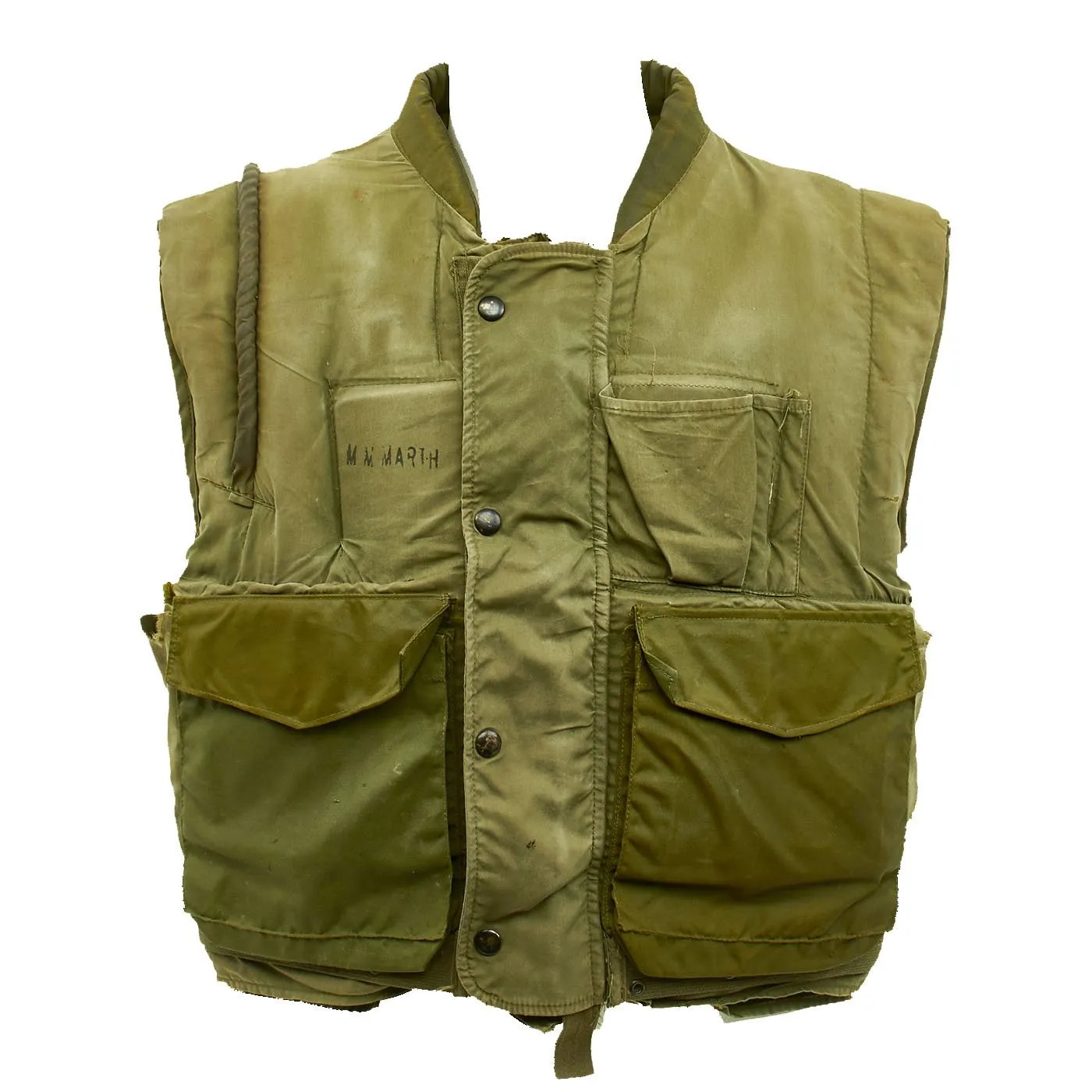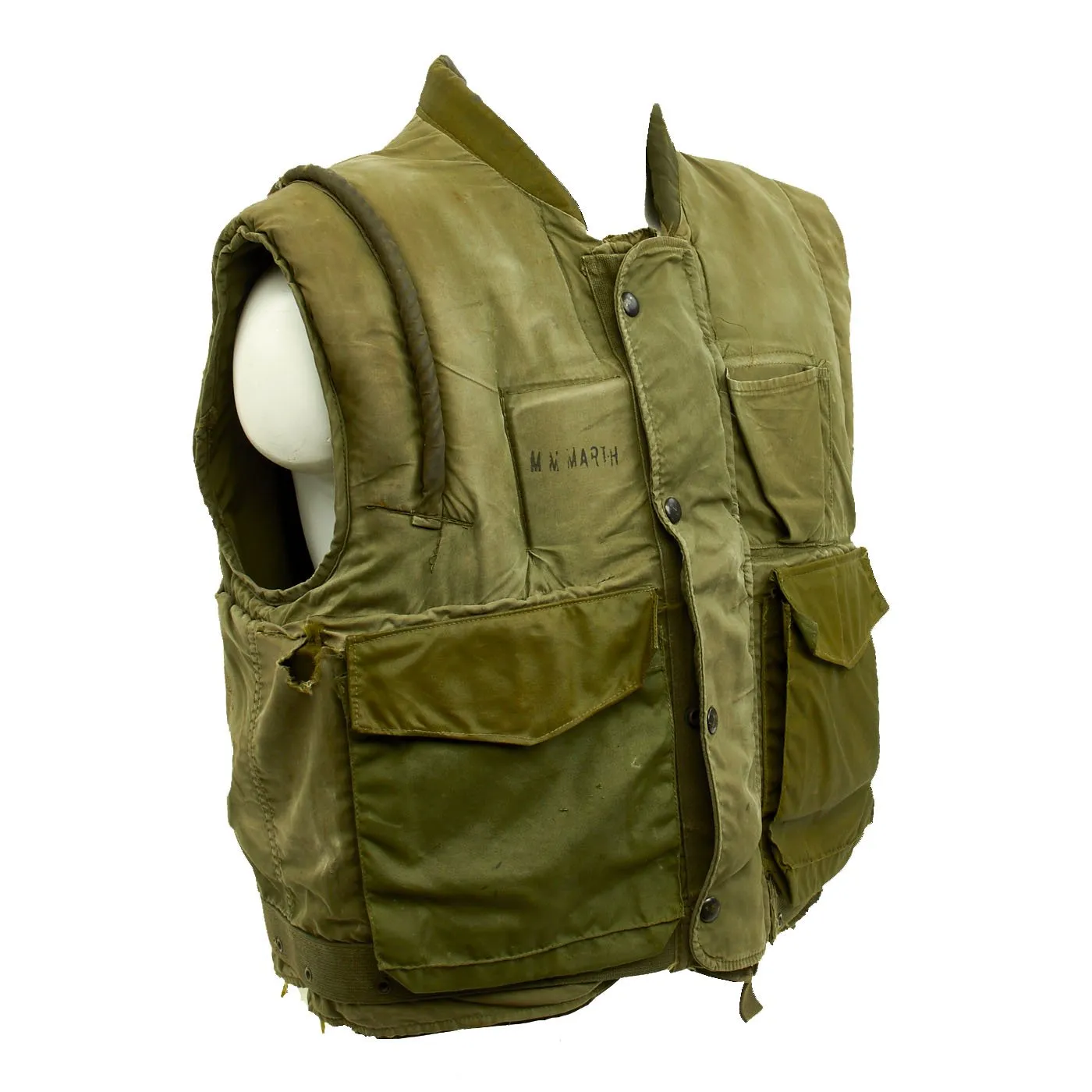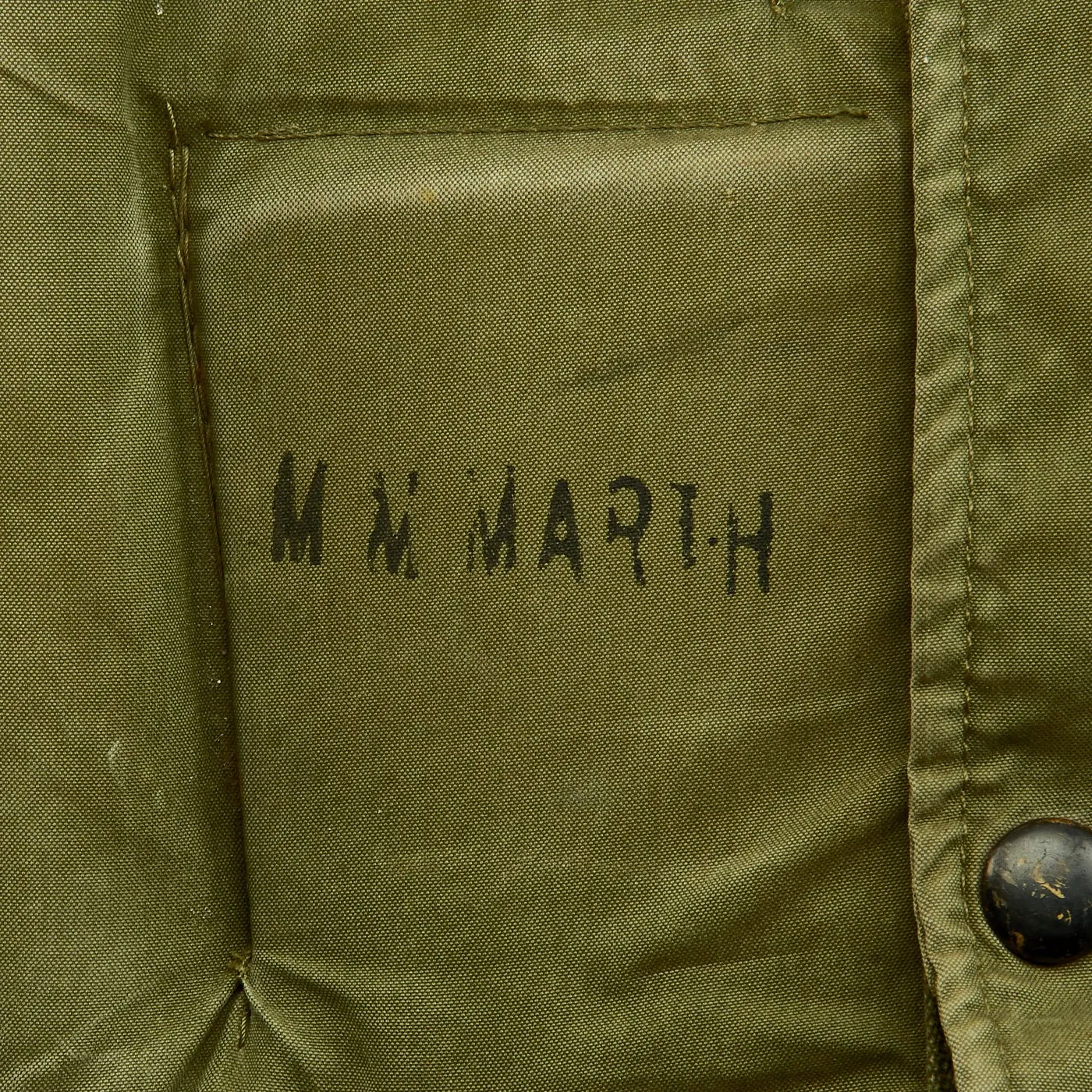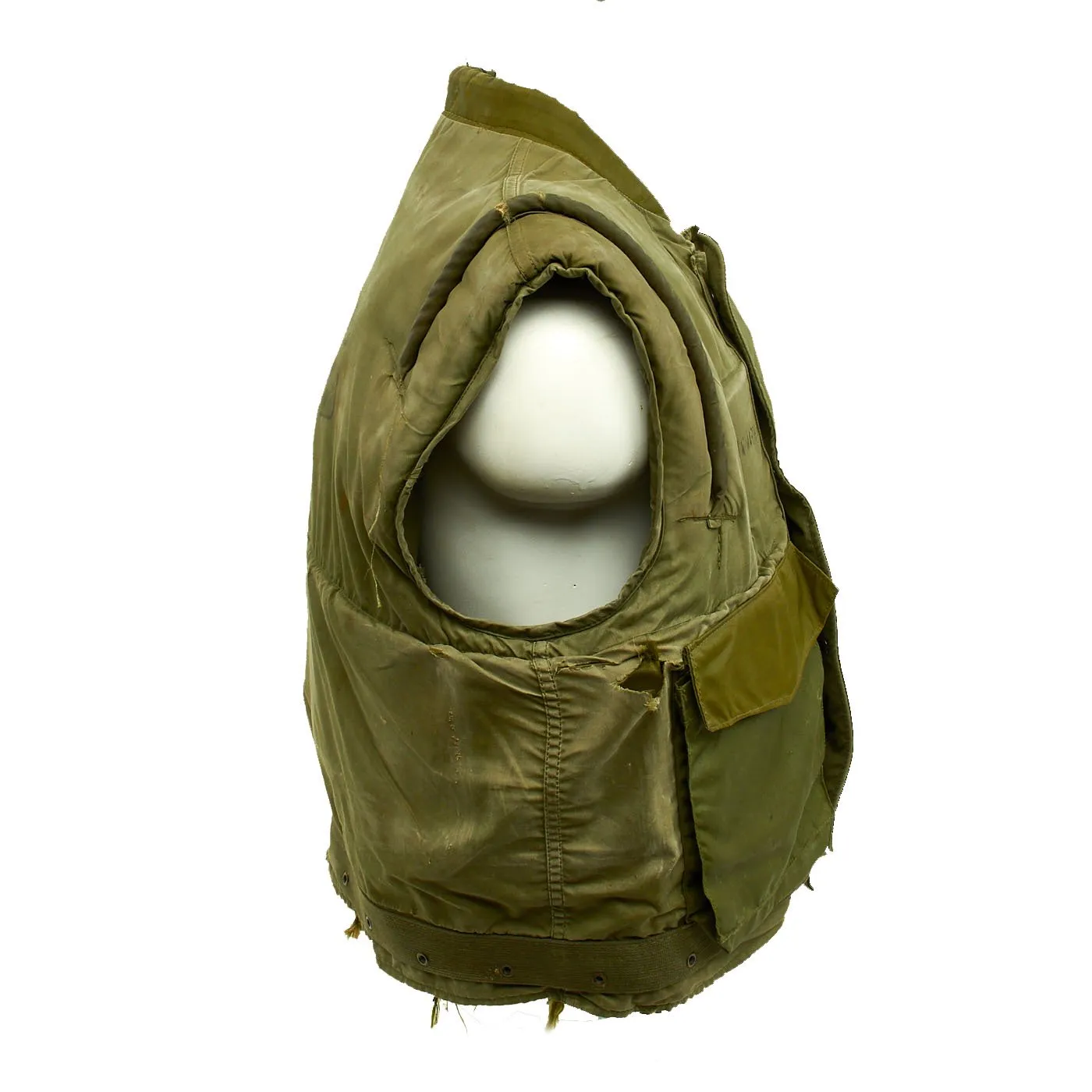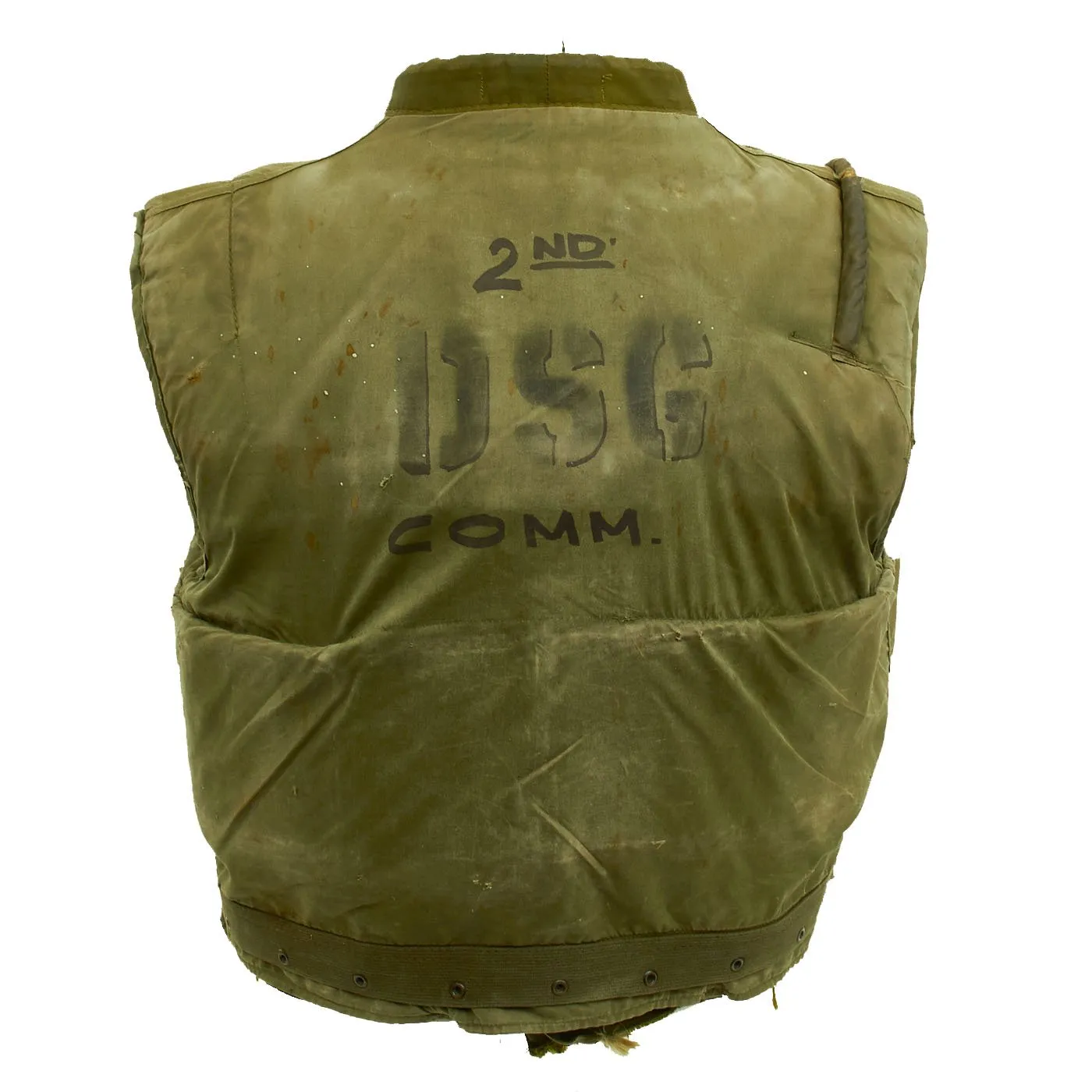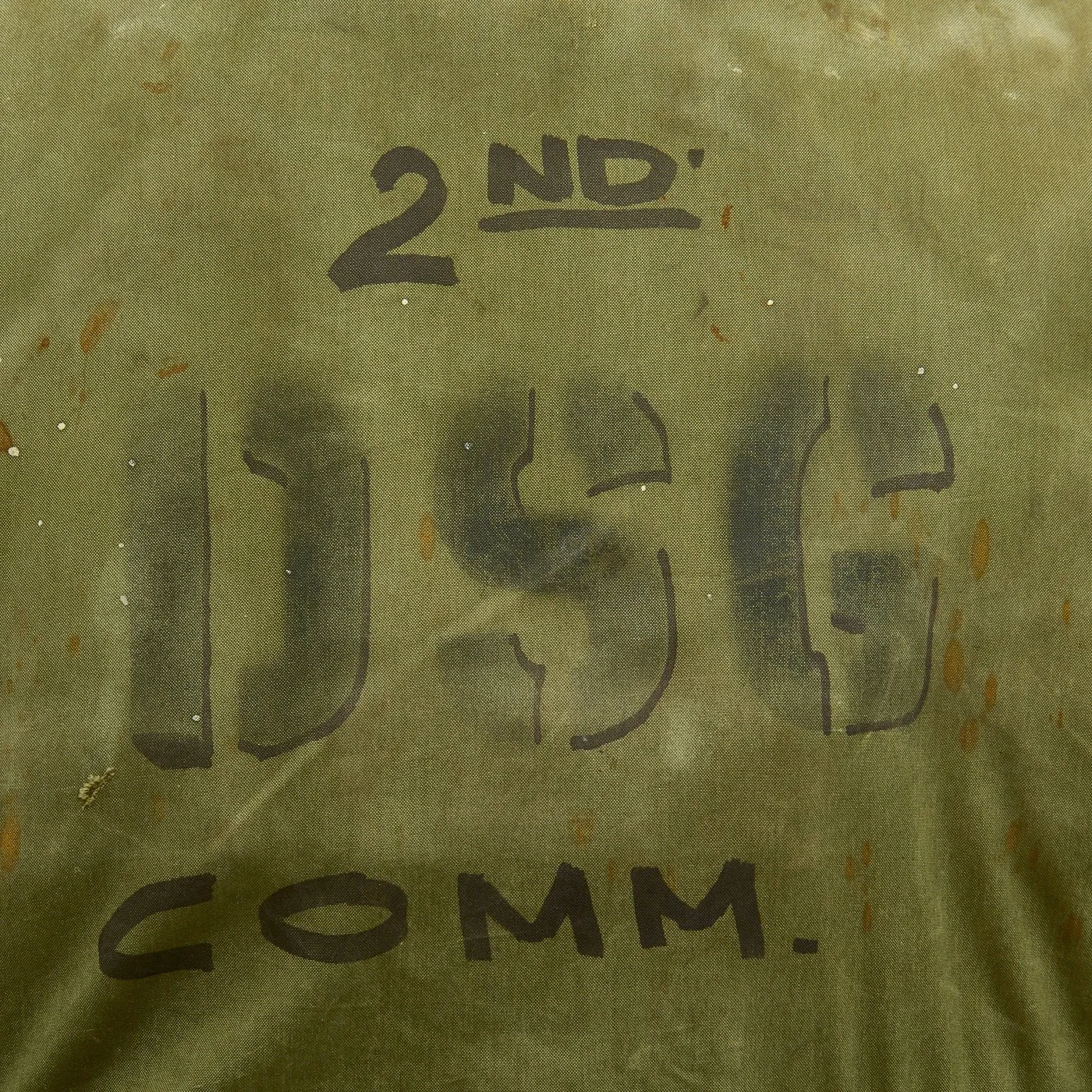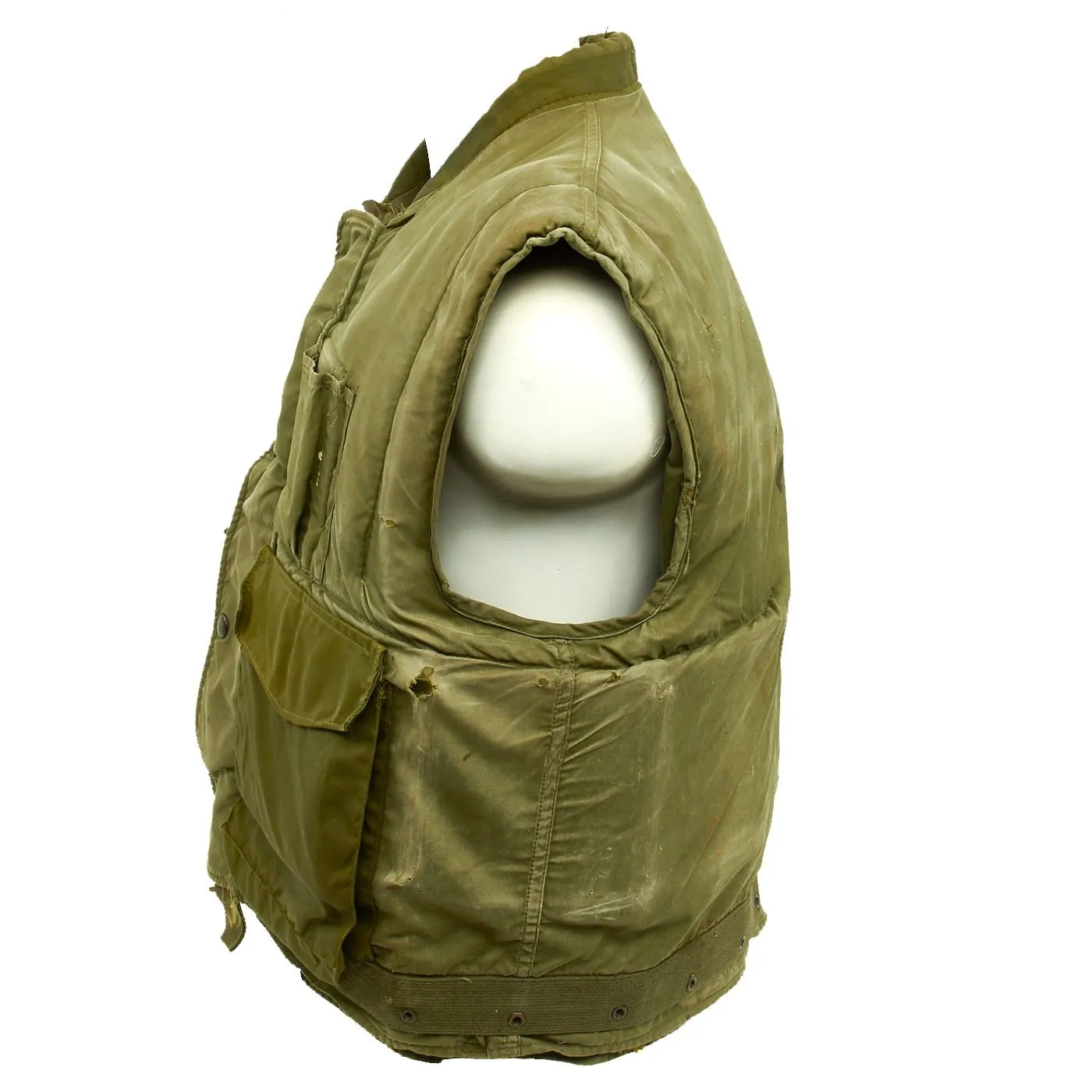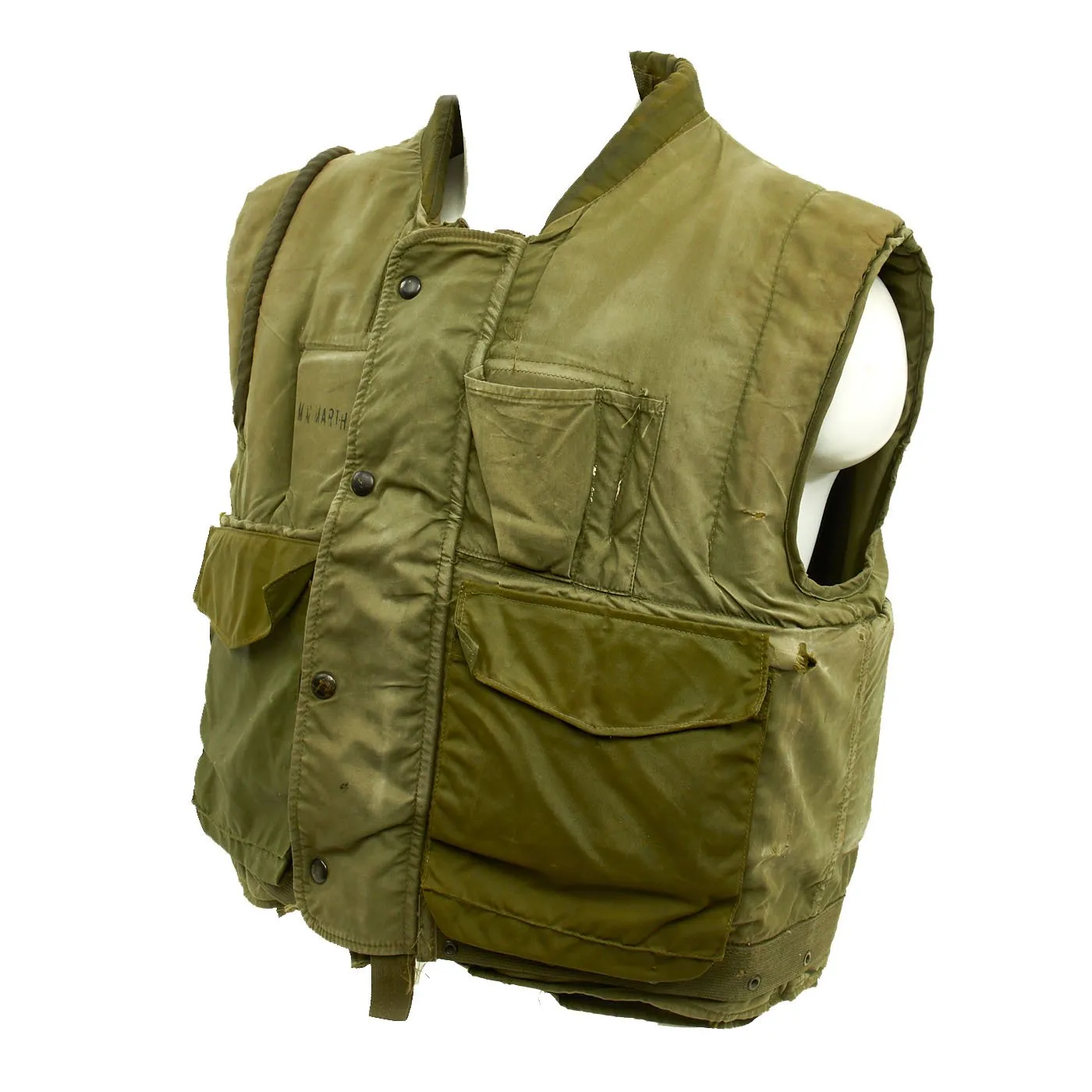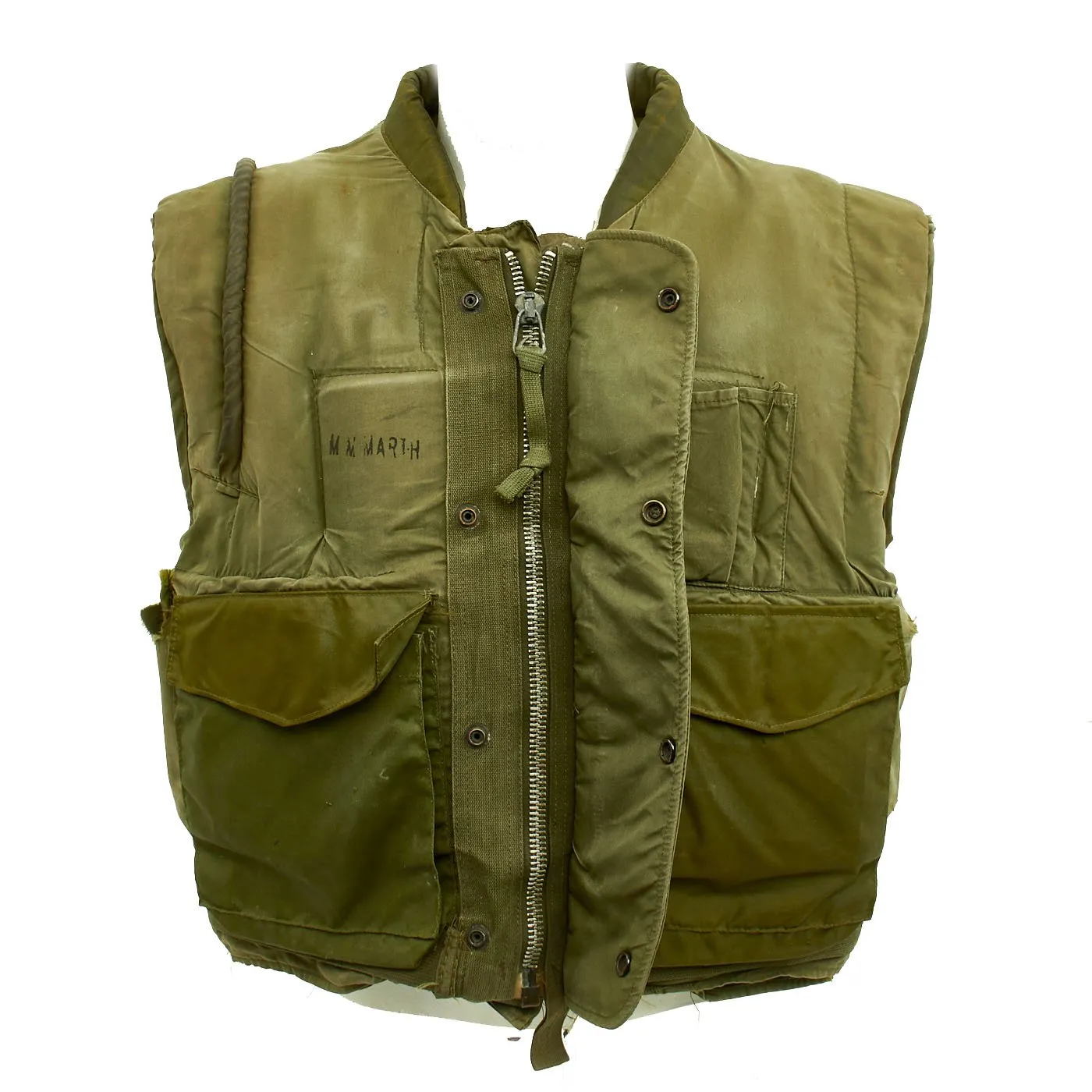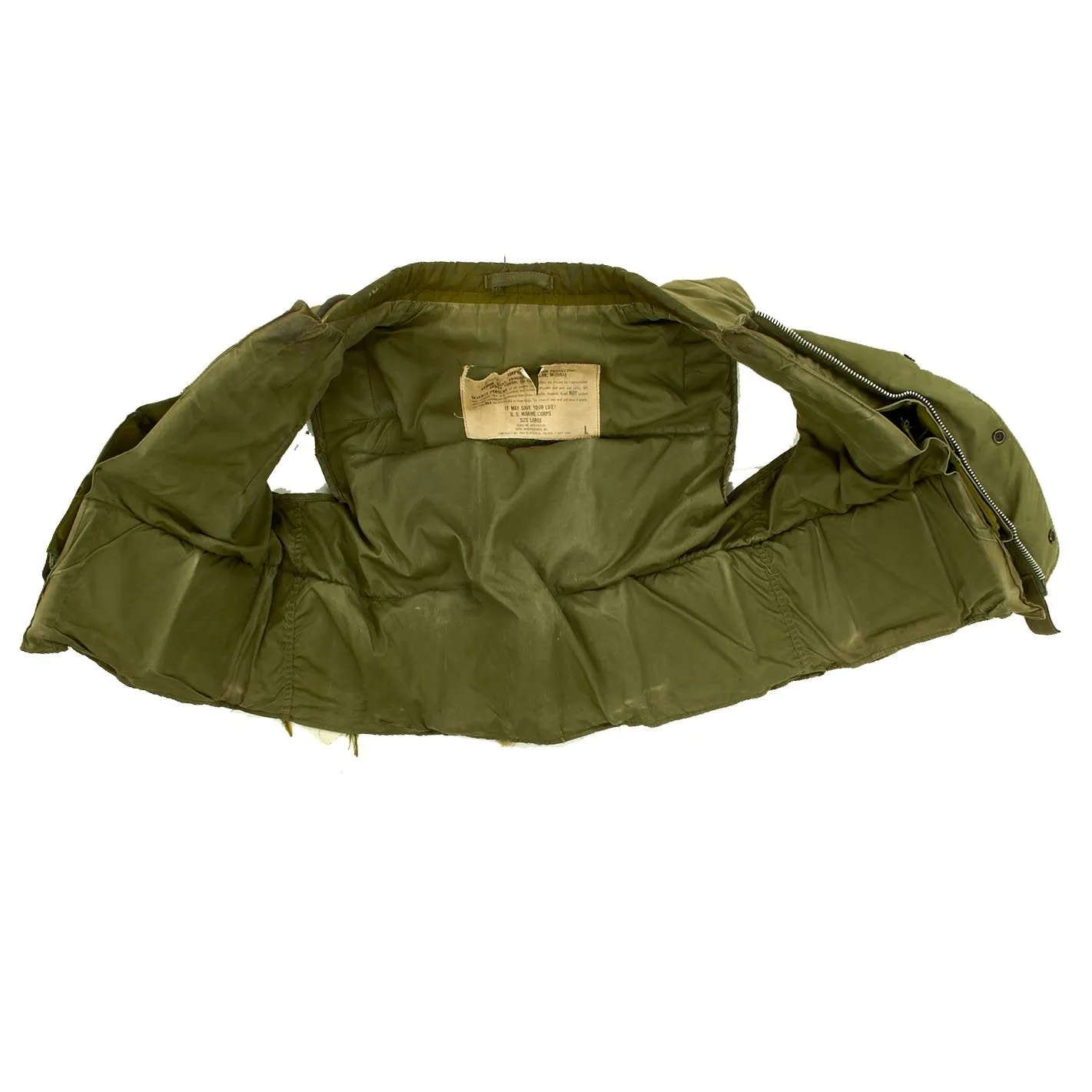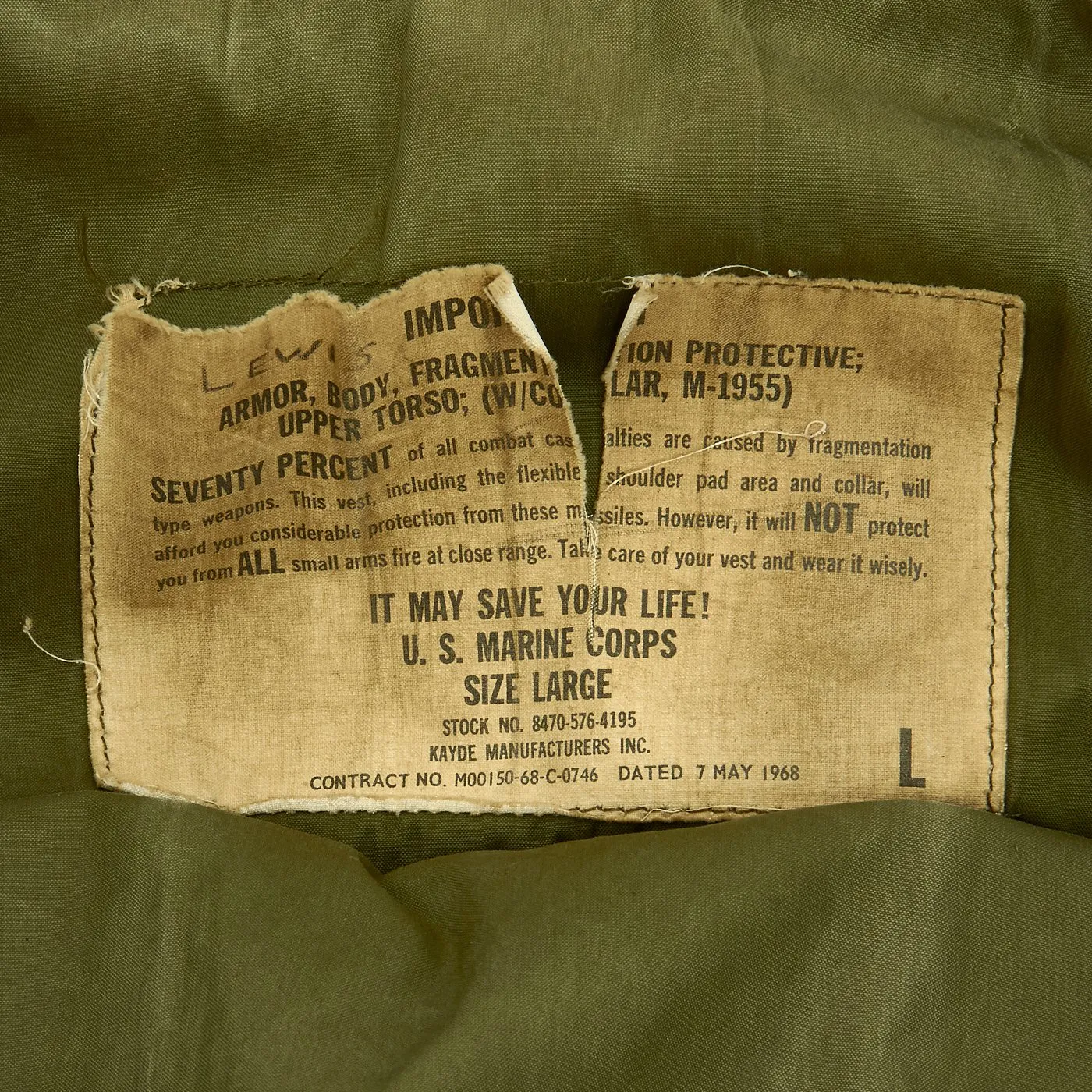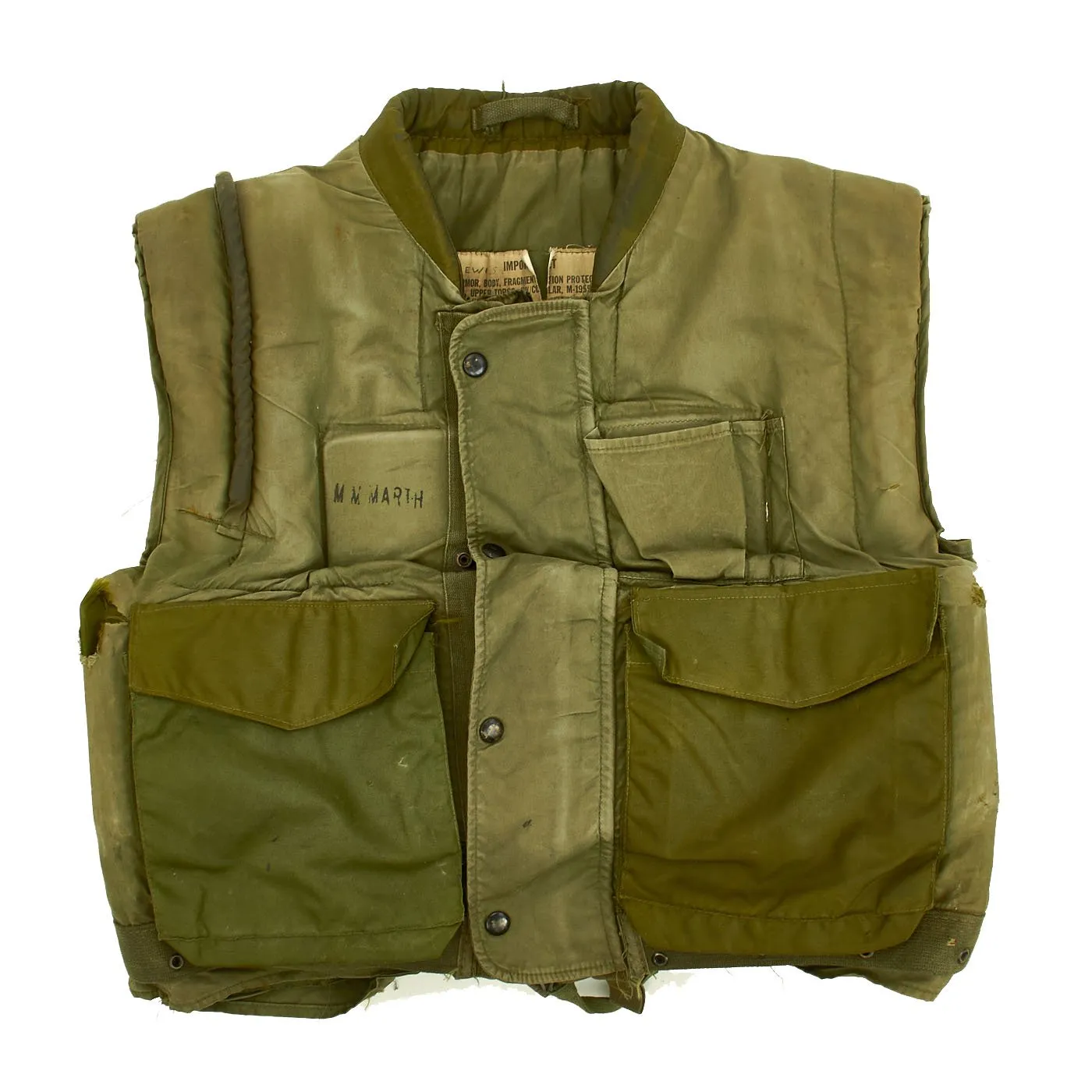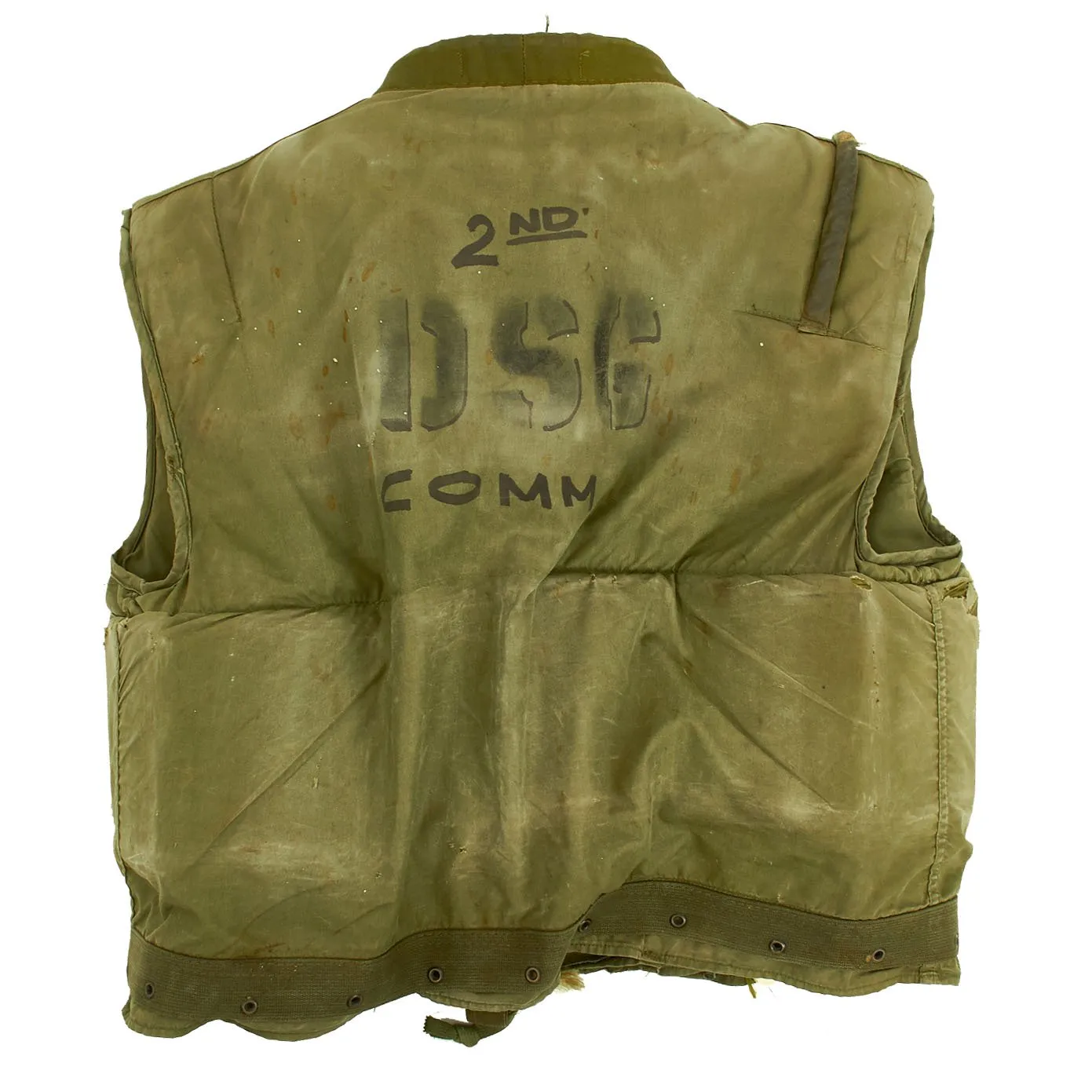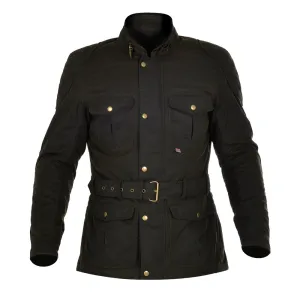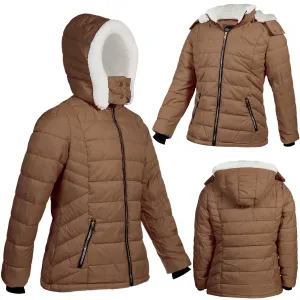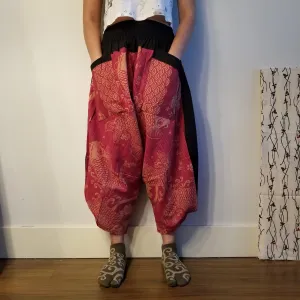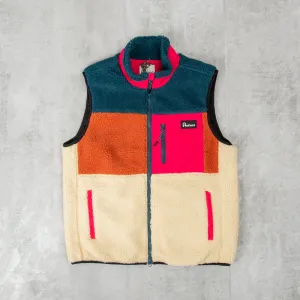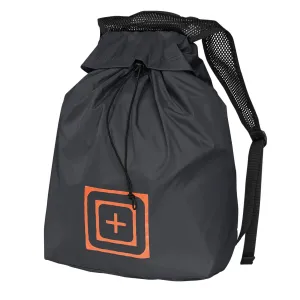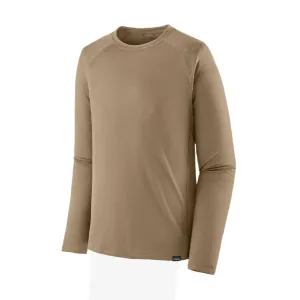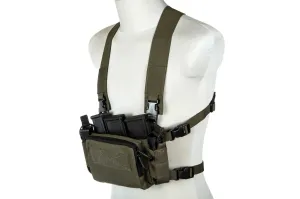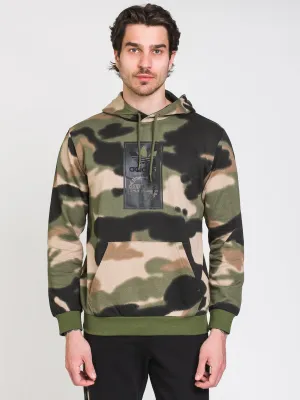Original Item: Only One Available. This is a classic Vietnam War Era U.S. Marine Corps M1955 Body Armor vest with data table that reads:
IMPORTANT
ARMOR, BODY, FRAGMENTATION PROTECTIVE:
UPPER TORSO (W/ COLLAR, M-1955)
M-1955 (W/ COLLAR)
The label is somewhat torn and faded, but complete, with a warning regarding usage, and the bottom of the label is marked U.S. MARINE CORPS / SIZE LARGE. There is also contract information, and the label is DATED 7 MAY 1968.
The snaps and zipper are all fully functional, and it just appears that the buttons for the front pockets are missing. The jacket also has some excellent markings on the exterior, such as the back, which reads 2ND DSG COMM., and the front which is marked to M. M. MARTH.
A very nice example, with some great research potential!
Body armor was widely used for the first time during the Korean War, providing not only protection but also a much-needed morale boost for soldiers.
"Its use was so closely interwoven with the defensive psychology of static warfare as to make it almost a symbol of the new GI, who, lacking in the enthusiasm and clear objectives of World War II, calculated his own victory in terms of personal survival," according to U.S. Army Uniforms of the Korean War, a book by Shelby Stanton.
Body armor is credited with reducing chest and stomach wounds by 60 percent during the war, according to Stanton's book.
During World War II, small-arms fire and mortar and grenade fragments caused many casualties and led the military to search for a body armor system. A flak jacket was developed for bomber crews, but infantrymen generally didn't wear armor.
The first vests were based closely on the flak jacket, which used fiberglass and a resin laminate. From June to October 1951, a joint Army and Navy group in Korea tested some 40 armor jackets.
Infantrymen liked the body armor. In March 1952, each division was given 350 "Marine vests," the nickname for the M1951.
The "Marine vest" fastened at the sides and protected a soldier's torso with curved, overlapping plates. It weighed 7½ pounds and was widely issued.
The Army Quartermaster Corps also developed the M12, a two-piece, 12-pound vest that soldiers found cumbersome. Eventually, the Army developed the M1952, a vest that became standard through the Vietnam War.
The M1952 weighed 8½ pounds. It had two front and back panels composed of ballistic nylon bonded with laminating resin. The vest was all nylon, which allowed more comfort and flexibility.
During the Korean and Vietnam wars, the flak jacket was changed and the manganese steel plates were replaced by other materials. The U.S. Army's vests (Body Armor, Fragmentation Protective, Vest M69) weighed under eight pounds and were made of several layers of ballistic nylon. The vests used by the U.S. Marines (Vest, Armored M-1955) weighed more than ten pounds and were a combination of ballistic nylon layers and fiberglass plates known as Doron. Doron was made of fiberglass fibers placed in an ethyl cellulose resin under high pressure. It was named after then-Colonel Georges F. Doriot, then director of the Military Planning Division, Office of the Quartermaster General.




